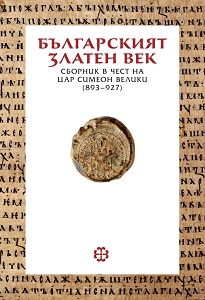
We kindly inform you that, as long as the subject affiliation of our 300.000+ articles is in progress, you might get unsufficient or no results on your third level or second level search. In this case, please broaden your search criteria.


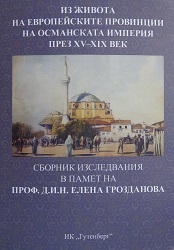
In this paper a hypothesis has been discussed that during a certain period of time at the beginning of 19th century at the tekke of Salaheddin baba (which turbe has been built by the famous Osman Pazvantoglu in the town of Vidin in 1801), there was a book collection or a library. This case study has been examined in the context of several topics: 1) the history of the town of "Islam serhad" Vidin; 2) Osman Pazvantoglu and his family; 3) Osman's activity in the field of Islamic charity and his building works; 4) the cult of Muslim Martyrs, precisely of "late" sehids, and the image of sehid Salaheddin/Salatin baba, killed in the battle when the Austrians besieged the Vidin castle in 1689; the tekke is mentioned in documents as a tekke, baba hanegah, zaviye, dergah and financially was supported in the 19th century by the vakf of Osman Pazvantoglu; according to the Muslim' folklore from Vidin his turbe became a worship place and Salaheddin was honoured as a healer; 5) the library of Osman Pazvantoglu; 6) Data found in the Catalogue of the Osman Pazvantoglu's Library from 1837 and in a manuscript from the same library, support the hypothesis of the existence of a book collection or a library in the tekke of Salaheddin baba, the books of the tekke have been moved to the public library of Pazvantoglu probably before 1837. The collection consisted of 30 manuscripts, 11 of which were described in the section "Sufizm, moral and sermon" of the Catalogue from 1837.
More...
The paper presents in analytical way to Fund of the Ottoman documents about Mecca and Medina, kept in the collections of Oriental Department of the National Library "St St Cyril and Methodius". The documents are grouped in six main sections according to their content. The author presents in annotated form multiple documents of that fund. The paper includes an annex of the inventory of documents from fund Hijaz (Arabia).
More...
This article to challenge the notion of an entirely harmonious Christian-Orthodox parish that dominates the historiography of the Ottoman Balkans. The interrelations between Orthodox priests and their flocks are analyzed here in the light of the so-called Chronicle of Serres (ca. 1642), composed by Papa Synadinos, a Greek Orthodox priest and a member of the local Christian elite. It is claimed that two distinct images of the parish, quite opposite to each other, emerge from the text of the Chronicle. The first one is the image of the "ideal" parish, free of any conflicts between the priest and his parishioners. In the Chronicle it was exemplified with the parish of Papa Siderus, Synadinos' father, who has been portrayed as e perfect priest and a role-model for his time. This image, however, proves to be no more than a literary construct. Much more interesting is the second image representing the "real" parish led by Synadinos himself. It was depicted as a place where frictions between the "enlightened" priest and his flock were a common occurrence. The present study attempts to delineate the economic as well as the cultural (in the broadest sense of the word) cause which stood behind the constantly evolving tensions between laity and priests. It is argued that disagreements deepened even more due to options available to both sides to compete against each other by petitioning either to the Ottoman or the Church authorities.
More...
Throughout the 15th-18th centuries the Jews, the Christians and the Muslims of the Ottoman Empire paid significant attention to the orphans' and poor children's relief. However, none of the Sultan's subjects set up an orphanage. The children in need were raised as fosterlings. Many extramartial infants were abandoned. If the abandoned children survived until 4 years of age, they entered the gangs. From 1839 onward the Ottoman officials considered the socialization of the orphans, pauper children and delinquents as an essential state affair. As early as 1860s they endeavored to set up industrial or reform schools. The paper of the author focuses on the very idea to establish such schools and casta light on their network in the Ottoman Empire. It summarizes the hypotheses for their origin; the available information about some West European models of social assistance for the children in need; the Ottoman initiative to train orphans, pauper children and delinquents; the role of Midhat Pasha; the origin of the term "islahhane"; the mutual rhetoric and rules of the Belgian and Ottoman reform schools. It advances the suggestion that the islahhanes or the industrial schools embodied the Ottoman attempt effecitvely to manage the periodically increasing number of the children in need. Perhaps the initiative combined the "domestic" model of the Catholic boarding schools, this one of the reform schools run by the Belgian government and the religious imperative for the orphans' and pauper children's socialization. While serving as a provincial governor, in 1863-1866 Midhat Pasha sought to carry out the actual state attempt. From 1867-1868 onward the project was developed by other provincial governors, as well.
More...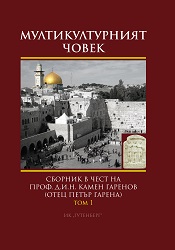
The paper presents part of a hoard containing items of armaments, horse trappings and everyday objects discovered accidentally on the land of the village of Markovo, Shumen region. While inspecting the site of the discovery on the surface the author came across an array of heavily decayed iron items from tools, cattle-breeding equipment, animal bones as well as some fragments of building ceramics and pots of engraved linear decoration and polished strips from the VIII-th - X-th c. The Old Bulgarian signs engraved on some of them refer to the same period and have numerous analogies from Pliska, Madara and Preslav. Then the author assumed that a medieval settlement probably existed in the site of the discovery or the objects fell there by obscure circumstances most probably from the nearby large but insufficiently studied Hambarluk fortress from late Antiquity and the Middle Ages which came into existence in the V-th - Vi-th centuries and continued existing until the XIV-th c. The published materials by analogies fall withing the chronological boundaries of the early Bulgarian Middle Ages and specifically in the mid-X-th - late XI-th centuries.
More...
Eastern Roumelia received its fundamental law drafted by a specially European commission. It is quite a detailed document providing for all aspects of life of the Roumeli citizens. The Organic Statute of Eastern Roumelia defined the new political formation in the Balkans as a state of modern (for that time) bourgeois-liberal type. It had all the features of and independant state: its own government, a representative authority elected by the people and a national army. The sovereignty of the sultan was included in the Statute, but thanks to the efforts of Eastern Roumeli political figures, it soon became nominal, without any serious power in the region. Unlike the neighboring countries (the Ottoman Empire, the Principality of Bulgaria, Serbia, Greece and Romania) there was no legalized and preferred religion in Eastern Roumelia. All religious issues were placed in the hands of the religious communities and the state did not involve itself with them. The only condition was that they should not violate any of the laws valid to the region.
More...
The numerous and once monolithic Bulgarian national enclave, which had lived for many years in the Northern Pryazovia steppes, suffered numerous calamities. The first settlers arrived in the Pryazovia in the summer and fall of 1861 and the settlement was finally completed only in 1863. The social and economic development of the Bulgarian colonies was under the influence of the system of assimilation policy of the Russian Empire in respect to national minourities. In spite of the conditions, some Bulgarian port settlements quickly turned into commercial and industrial centres. The Bulgarian settlers upheld their Bulgarian national identity against the pressure of the assimilation policy mainly by preserving their native language, everyday life, customs, rites, feasts and folklore. In the first years of settlement the Bulgarians, particularly those in the Crimean Peninsula (Tauris) focused on and managed to achieve the opening of schools, at first only in several large settlements and later in all Bulgarian villages. In Preslav there was even a Central Bulgarian School subordinate to the Ministry of State Properties. Russia's assimilatory imperial policy also influenced the cultural development of the Bulgarian settlers. Official lay and church authorities were hostile to the language and some elements of the traditional life of Bulgarians under the pretext that they were heathen. Bees and other youth gatherings of definitely Bulgarian outlook were presecuted. Theatical and other amateur performances n Bulgarian were banned. At the same time, as loyal subjects, Bulgarians were active participants in World War I, in both recruitment and requisition. The Civil War did not pass by the Bulgarian settlements either. In some parts they formed armed bands and became part of the Free Territory organized along anarchist lines. At the establishment of Soviet power, the Ukrainian government was headed on three occasions by the Bulgarian Krustyu Rakovski. When Tauris became Soviet, the mayors, clerks and popular guards who enjoyed confidence in the Bulgarian settlements were s wept away. About then or more thousnad Bulgarians perished in the turbulent period of 1917-1922. The intelligentsia, which usually came from broad-minded affluent families, war a particular victim. The road to inveigle the authorities to grant some cultural (and partly administrative) "autonomisation" of the Tauris Bulgarians was opened with the establishment of a Bulgarian Bureau with the Central Commitee of the Communist Party (Bolshevik) of Ukraine and the publication of the 'Surp i Chuk' (Hammer and Sickle) newspaper in Bulgarian. The resistant against collectivization and the subsequent artificially induced famine in 1932-1933 cost the live of 20 000 Tauris Bulgarians. This also continued during the unprecedented Great Purge until Stalin's death in 1953 to which many Ukrainian Bulgarians fell victim.
More...
The life and work of the Turkish journalist and publicist M. N. Deliorman, packed as they are with plenty of valuable information about the history of the Turkish community and the political history of Bulgaria, deserve to be reached. After presenting the most important points in the biography of M. N. Deliorman, this paper discusses in great detail his reports from Bulgaria, which he sent as a correspondent in the course of nearly two months directly after the coup on September 9, 1944.
More...
Civilizational accumulations, the deformations of various nature and the need to rationalize them give rise to contradictory opinions about identical processes and events. Several Balkan authors are presented, as well as their views and methods and models they use. The Croatian DubravkaUgrešić and her painful nostalgia for the disintegrated Yugoslavia in 'The culture of Lies'; Turkish historian Fikret Adanir with his work on the Macedonian Question 'Die makedonische Frage. Ihre Enstehung und Endwicklung bis 1909', in which the leitmotif of the study is the principle of the Ottoman 'milliyet' system; as well as the book of Greek author Anastasia Karakasidou 'Fields of Wheat, Hills of Blood: Passages to Nationhood in Greek Macedonia, 1870-1990', first published in the United States. It speaks of the Bulgarians in Aegean Macedonia, as well as the fate of the Macedonian citizen Vladimir Paunovski and his report revealing the ideology of Yugoslavism and Titovism, which generated Macedonism and the Macedonian language. The paper also reveals the connection between their views and their attitude towards the doctrinal framework of Benedict Anderson's fundamental for modern anthropology work, 'Imagined Communities'.
More...
The author makes a short review of publications of Arabic Ottoman inscription in honour of a sheikh. The paper provides a facsimile, a deciphered text transcribed in Latin, a translation in Bulgarian and coments on the monument. The inscription shows that there were members of the Qadiri tariqa (Sufi order) in the 18th century in Plovdiv and maybe that there was a tekke of this brotherhood.
More...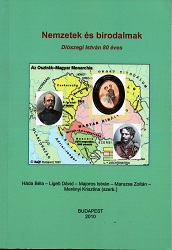
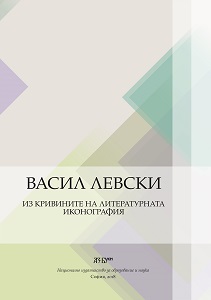
The paper discusses the models of memory, which the cycle of odes “Epopee of the Forgotten” by the Bulgarian poet Ivan Vazov and the cycle “Rhapsodies of the Bulgarian Gusle-player” by the Slovenian poet Anton Ashkertz offer to the respective national audiences. The analysis bounces off the provocation of the mutual “dislike” of Ashkertz and Vazov so as to project through the textual juxtaposition of the shared by the two poets literary icon of “Vasil Levski” the different functionality of their means of expression
More...
The year 1898 marked the first jubilee of Vasil Levski – 25 years since his hanging. The dynamics of political processes in liberated Bulgaria at the time present a rather interesting and particularly complex picture against the background of which this event unfolded. The stereotype of jubilee celebrations was yet to consolidate and this particular occasion – the anniversary since the death of the Apostle of freedom – makes visible the deep political contradictions inherited from previous historical realities. The manifestations of these contradictions can be seen in the press in 1898.
More...
The essay attempts to juxtapose and analyze the divergent and often contradictory stories accompanying Vasil Kunchev’s path into and out of monasticism, his subsequent religiosity, and his Christian consciousness. It outlines the image of a man experiencing doubts and inner conflicts but preserving his faith. His letters and proclamations clearly reveal how the knowledge of Christianity he had received and his life of faith shaped his revolutionary philosophy.
More...
e need to segregate the true historic personality of Vasil Levski in his undisputed role and pivotal mission of Bulgarian national hero, from the mythical images created by the idiosyncratic viewpoints in different sociopolitical layers of time. The text duly justifies the need to rediscover the real personality of the Bulgarian Apostle of Freedom. The academic study follows the ideological transition of Vasil Levski from conservative nationalism, towards the liberating revolutionary nationalism of the Bulgarian Revival period. The study takes into consideration the indirect ideological impact of Giuseppe Mazzini over Vasil Levski, and follows up the unique application of the Mazzinist concepts of revolutionary nationalism in the specific Bulgarian conditions.
More...
The article at hand deals with projections of Vasil Levski’s image in the self-consciousness of Bessarabian Bulgarians. The resettlement to Bessarabia took place long before the formation of Bulgarian semiological system and significantly prior to the appearance of the Vasil Levski culturologem as its substantial construct. Even though historically the diaspora has come a long way full of assimilation threats with public education in Bulgarian only becoming possible by the end of 1980’s, and the cultural processes together with the interethnic environment being very different from those in the metropolis, still the ethnocultural coordinate system of the young generation of Bessarabian Bulgarians (revealed by means of a directed associative experiment) holds the image of Vasil Levski as a key culturologem for the Bulgarian segment of personosphere of the 10th generation of Bulgarian immigrants in Bessarabia.
More...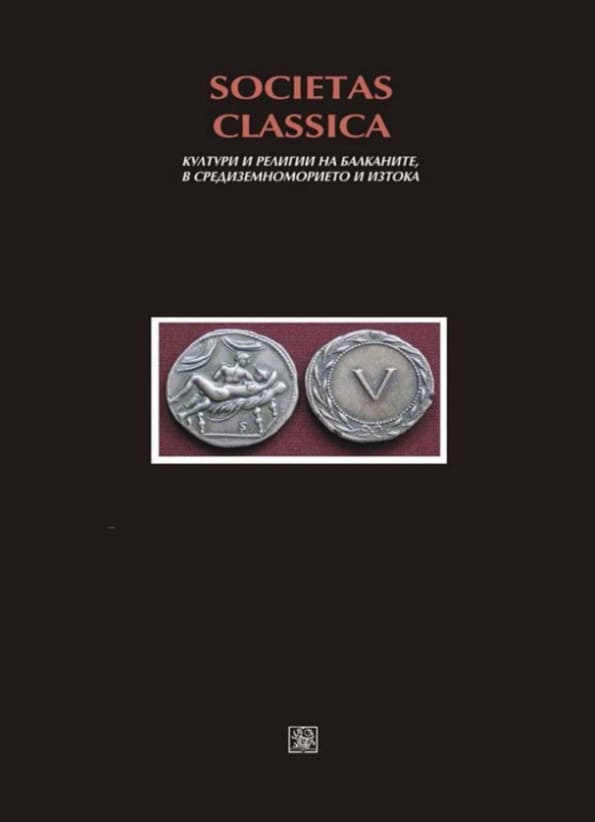
With the restoration of Bulgarian statehood the various ethnic and religious communities, incl. and Gypsies, become full-fledged Bulgarian subjects. In the announcement, we are addressing only the specific moments outlining the place of the Gypsies in a Bulgarian state in the period from the end of the 19th century to the mid-twentieth century. We fix on the actions of the executive to them as regards of migration processes, nomadism and the territorial settlement of their neighborhoods. We look at the institution of cheribashiata – the proxy who presents the gypsies in front of the municipal administrative authorities as well as the place of the Gypsies in the institutions responsible for external and internal security and public order in Bulgaria.The process of globalization and the mobility of human resources pose new tasks and challenges towards the foreign language education in theoretical and practical aspect nowadays. It focuses on the development of competences outside the classroom that help smooth interactions and co-existence between members in multicultural societies. The aim of the present paper is to: 1) Introduce to the reader some of the methods used in teaching Japanese language as a second language in higher education institutions in Japan; 2) Focus on contemporary methods that meet the requirements of the process of globalization.
More...
The object of study are specific realizations of otherness: heathens, heretics, people with disabilities, borderline women. Their exclusion and inclusion to their own is carried out primarily through verbal practices in medieval writings and through rituals in traditional culture. The surveys conducted among present-day Bulgarians enrich our understanding of the concept of others.
More...